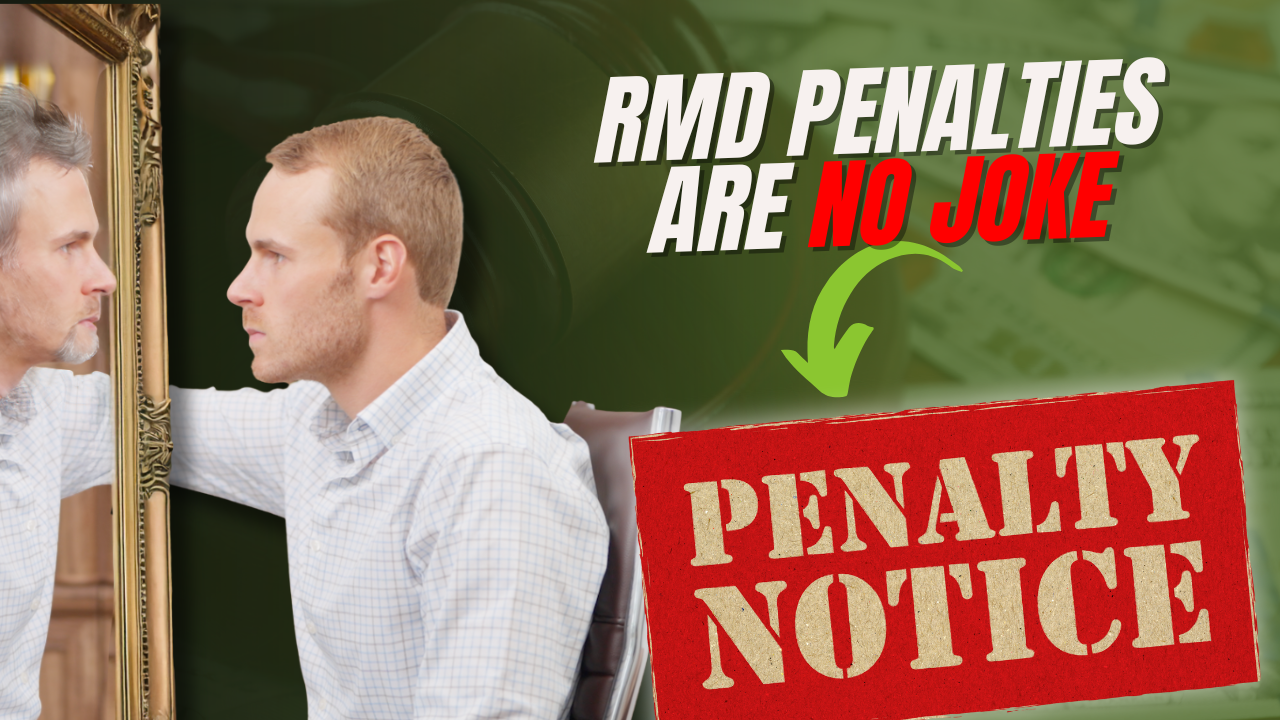TRANSCRIPT:
Have you spent years, maybe decades, faithfully saving into your IRA, 401k, 403b, enjoying tax-deferred growth? Well, the IRS has been patiently waiting. At age 73, the wait is over, because now they want their share. And if you ignore them, the IRS could hit you with one of their hardest penalties. But if you plan smartly, RMDs don’t have to be a financial setback. They can be a strategic opportunity. Hi, I’m Hunter Brockway, founder of Boca Retirement Strategies. We help good people retire successfully and stress-free with more money and fewer taxes. Let’s break down one of the most important and often misunderstood aspects of retirement planning. Required minimum distributions for RMDs. Once you turn 73, the IRS requires that you begin withdrawing the minimum amount from your pre-tax retirement accounts every year. This includes accounts like IRAs, 401ks, 403bs, and other tax-deferred plans. Yes, you can take more than that minimum.
But take less and you could face a penalty on the amount you should have withdrawn. Yeah, that’s right, a penalty for not taking out your own money. So how do you stay compliant and make the most out of this rule? Here’s how the IRS calculates your required minimum distribution. Step one, look at the balance of each of your retirement accounts as of December 31st of the previous year. Let’s say one account, it’s $453,000. Step two, divide that number by your IRS life expectancy factor. There’s a few different tables that we won’t go into here that are on the IRS website. For 73 year old, it’s currently 26.5. Step three, your result is your required minimum distribution. So in this case, $453,000 divided by 26.5 equals $17,094.34. That’s what you have to withdraw this year. Then rinse and repeat every year going forward. And I hear this one a lot, I don’t need the money, can I just leave it in there? Unfortunately, no.
The IRS isn’t concerned with whether you need it or not, they just want their taxes, their cut. Once you take it out, what you do with it is up to you, but you have to actually take it out. A lot of my clients who don’t need the cash will simply move it into a brokerage account, also called a non-qualified account. That way, the money keeps growing, just not tax-deferred. Again, important to note, they’re not making a transfer. They’re withdrawing, having the taxes sent to the IRS, and then depositing the money. So is there a way to avoid paying taxes? Yes. And this is one of the most overlooked opportunities in the tax code. If you’re charitably inclined, you can send up to $100,000 per year of your RMD directly to a qualified 501c3 charity. This is called a qualified charitable distribution, or QCD. You don’t pay income tax on this money at all. It’s a win-win. But, and this is important, QCDs are often misreported to the IRS, which could lead to double taxation.
So work with an advisor to make sure it’s handled correctly who properly communicates these actions to your CPA. And what if you have multiple retirement accounts? The IRS does allow something called aggregation in certain cases for certain accounts. So if you have three IRAs, for example, you can take the total RMD amount from just one of them. But be aware not all accounts qualify for aggregation. You cannot mix and match IRAs with 401ks or 403bs or your IRA with an inherited IRA. Again, this is where working with an advisor is key. And so what if you’re still working past age 73? There’s a tiny sliver of people who might still get to delay their RMDs and that’s if you’re still working for the employer who sponsors your 401k and you don’t own 5% or more of that company. If that’s you, you might be able to delay but most people still need to take their RMDs starting at 73. Again, to clarify, that’s only the 401k at that workplace, not your IRAs or other accounts.
Trust outdated internet advice. The RMD rules have changed multiple times in recent years thanks to the SECURE Act of 2019 and updated rules in 2024. You can even still find incorrect articles on the IRS’s website. So if you’re reading blogs or watching old videos, be cautious. Make sure you’re getting advice based on the most current laws. Required minimum distributions can feel like a hassle, but they don’t have to be. Handled properly, they’re just another piece of your retirement income strategy. Handled poorly, they’re a landmine. That’s why your advisor should work with you every year to track your balances, apply the correct life expectancy factor, and ensure you stay on the IRS’s good side. Still have any questions? Drop them in the comments or reach out to us directly. We’re here to help you get the most out of life and your money. Bye.

